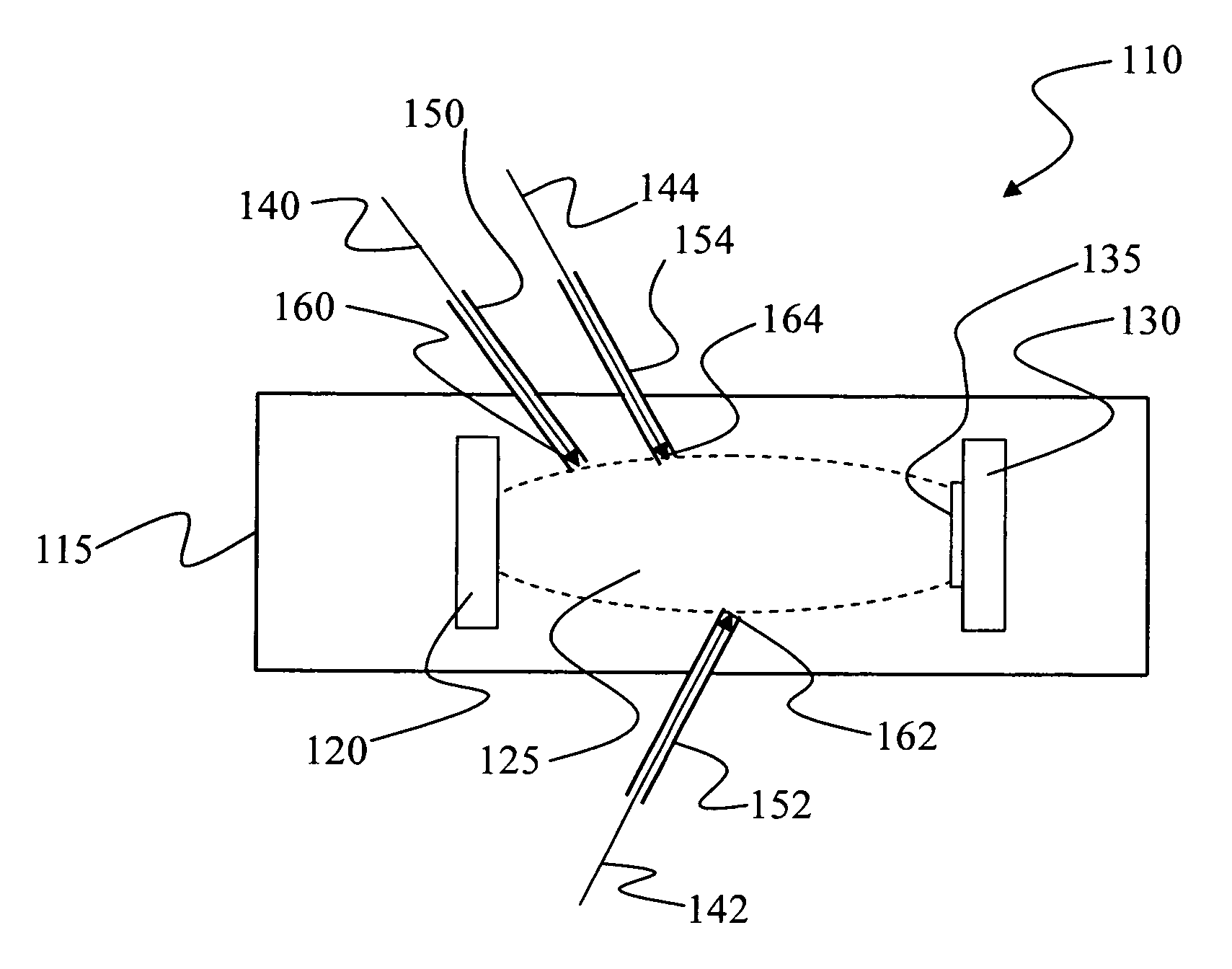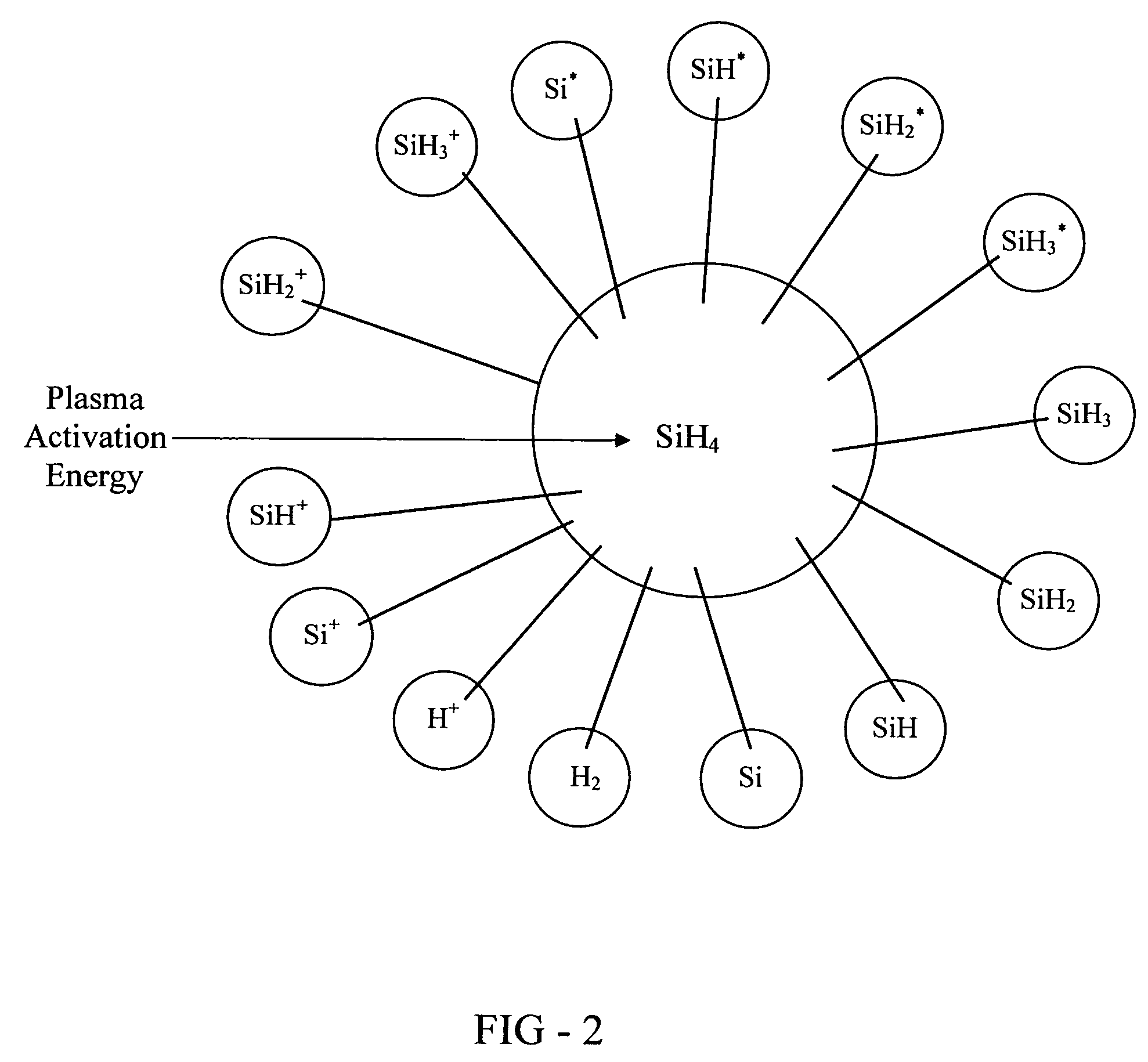Thin film deposition via a spatially-coordinated and time-synchronized process
a spatially coordinated, time-synchronized, thin film technology, applied in the direction of plasma technology, sustainable manufacturing/processing, final product manufacturing, etc., can solve the problems of low absorption efficiency of crystalline silicon, inherently slow method, high cost, etc., and achieve high deposition rate and improve photovoltaic efficiency
- Summary
- Abstract
- Description
- Claims
- Application Information
AI Technical Summary
Benefits of technology
Problems solved by technology
Method used
Image
Examples
Embodiment Construction
[0035]Although this invention will be described in terms of certain preferred embodiments, other embodiments that are apparent to those of ordinary skill in the art, including embodiments that do not provide all of the benefits and features set forth herein and including embodiments that provide positive benefits for high-volume manufacturing, are also within the scope of this invention. Accordingly, the scope of the invention is defined only by reference to the appended claims.
[0036]The instant invention focuses on a plasma deposition process in which the state of the plasma is engineered to optimize the structural and electronic quality of an as-deposited thin film material. In one embodiment, the thin film material is a photovoltaic material. The invention is designed to remedy deficiencies in the plasma that forms naturally in a conventional plasma deposition process. In the prior art, a plasma is normally formed by first delivering a molecular precursor and a carrier gas to a c...
PUM
| Property | Measurement | Unit |
|---|---|---|
| electric field | aaaaa | aaaaa |
| flow rate | aaaaa | aaaaa |
| average lifetime | aaaaa | aaaaa |
Abstract
Description
Claims
Application Information
 Login to View More
Login to View More - R&D
- Intellectual Property
- Life Sciences
- Materials
- Tech Scout
- Unparalleled Data Quality
- Higher Quality Content
- 60% Fewer Hallucinations
Browse by: Latest US Patents, China's latest patents, Technical Efficacy Thesaurus, Application Domain, Technology Topic, Popular Technical Reports.
© 2025 PatSnap. All rights reserved.Legal|Privacy policy|Modern Slavery Act Transparency Statement|Sitemap|About US| Contact US: help@patsnap.com



